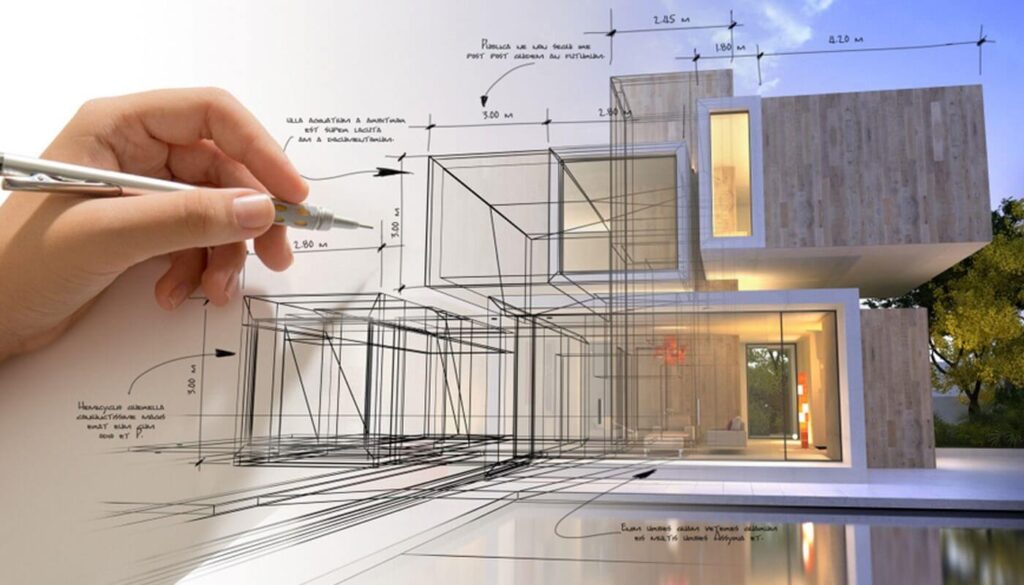A Detailed Overview of Architectural Designs and Their Impact on Modern City Planning and Development
Architectural styles have long offered as a mirror to the social values and technical innovations of their time, playing a crucial duty in shaping modern-day city planning and development. From the majesty of Neoclassicism to the utilitarian technique of Brutalism, each design has presented distinct ideas that affect city looks and performance.
Historical Overview of Architectural Styles

As societies transitioned via the Center Ages, Gothic architecture emerged, defined by its verticality and elaborate outlining, matching the spiritual aspirations of the age. The Renaissance marked a rebirth of classical ideals, combining art and style in innovative means that affected subsequent designs throughout Europe.

Today, building designs remain to advance, driven by globalization and sustainability concerns, mirroring a dynamic interaction in between heritage and advancement. This historical introduction underscores the relevance of style as a mirror of societal development and as a driver for urban development.
Trick Architectural Styles Explained
The diversity of architectural designs mirrors the myriad impacts that shape our constructed setting, each embodying distinct attributes and social importances. Trick building designs consist of Timeless, Gothic, Baroque, Innovation, and Postmodernism, each standing for distinct historic contexts and visual viewpoints.
Classical architecture, rooted in ancient Greece and Rome, highlights balance, percentage, and the usage of columns (cda architects). In contrast, Gothic design, growing in the center Ages, is identified by pointed arches, ribbed vaults, and flying buttresses, producing an ethereal quality in basilicas. Baroque architecture, arising in the 17th century, is noted by splendour, fancy embellishment, and a dynamic interplay of light and shadow
Innovation, which obtained energy in the very early 20th century, prioritizes function over form, making use of brand-new materials like steel and glass to create minimalist structures. Postmodernism, responding versus the austerity of Modernism, accepts eclecticism and historical reference, commonly including playful aspects and irony.

Influence On Urban Planning
In forming the development of cities, architectural designs significantly influence metropolitan planning decisions. The selection of architectural style typically determines the aesthetics, performance, and general character of city environments.
Furthermore, architectural designs can affect zoning guidelines and land utilize policies. Urban coordinators must take into consideration the prevailing architectural trends when designing areas, making sure that new advancements harmonize with existing structures. This consideration promotes cohesive urban landscapes and improves neighborhood identity.
The implementation of certain building designs can likewise influence socioeconomic variables within a city. High-end modern styles may draw in wealthy locals and businesses, leading to gentrification, while extra budget friendly real estate solutions could focus on see this page functional and sustainable layouts to learn the facts here now accommodate varied populaces. cda architects. Inevitably, the interplay between building designs and city preparation creates vibrant cities that show both historical context and modern needs, forming the lived experiences of their occupants
Sustainability and Modern Architecture
Building styles play a crucial function in resolving contemporary challenges, specifically in the realm of sustainability. As metropolitan areas broaden and environmental issues magnify, modern design progressively embraces sustainable style concepts that prioritize energy efficiency, source conservation, and very little eco-friendly impact.
Contemporary architectural movements, such as biophilic style and eco-friendly architecture, advocate for structures that integrate with their environments, utilizing all-natural materials and advertising biodiversity. These styles commonly include renewable resource sources, such as solar panels and wind turbines, to decrease dependence on nonrenewable fuel sources and reduced carbon footprints.
Furthermore, the assimilation of sophisticated innovations, such as clever structure systems, boosts power monitoring, optimizing source use while guaranteeing resident comfort. Ingenious water administration methods, consisting of rain harvesting and greywater recycling, further contribute to lasting urban atmospheres.
Significantly, sustainability extends past environmental issues; it includes social and economic dimensions. By fostering area well-being and advertising inclusivity, modern-day building styles align with lasting development goals. The evolution of building techniques this contact form continues to shape resistant cities that not only fulfill the requirements of the present yet likewise protect the future for generations to come.
Neighborhood Interaction in Design
Area interaction in layout serves as an essential bridge in between designers and the populations they offer, making sure that the constructed atmosphere shows the needs and ambitions of its users. This joint procedure welcomes neighborhood participants to add their insights and choices, promoting a feeling of possession and obligation towards the rooms they populate.
Reliable community involvement employs numerous methods, such as workshops, surveys, and public discussion forums, to gather varied perspectives. These strategies help with a two-way discussion, allowing designers to recognize neighborhood contexts while encouraging homeowners to articulate their issues and needs. This inclusivity not only enhances the layout quality however additionally promotes social equity by attending to the one-of-a-kind difficulties faced by marginalized teams.
Moreover, neighborhood involvement can lead to ingenious options that could not emerge in a typical style procedure. By incorporating regional expertise and social worths, architects can develop spaces that resonate even more deeply with customers, enhancing usability and sustainability. Ultimately, prioritizing area involvement in style procedures leads to atmospheres that nurture social communications, support wellness, and reinforce area connections, therefore playing a crucial function in forming modern-day city landscapes.
Conclusion
Architectural styles have actually profoundly affected modern-day city preparation and growth, mirroring evolving social and technological contexts. The integration of historical aesthetic appeals with modern requirements fosters metropolitan atmospheres that prioritize sustainability and neighborhood engagement. As cities continue to grow and adapt, the continuous dialogue between building heritage and modern-day style principles will stay vital in producing inclusive, vibrant areas that boost top quality of life and promote social equity. The future of metropolitan growth rest on this unified equilibrium.